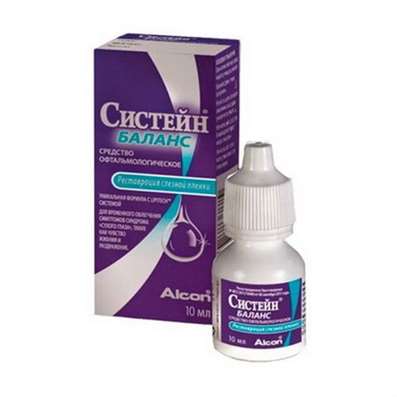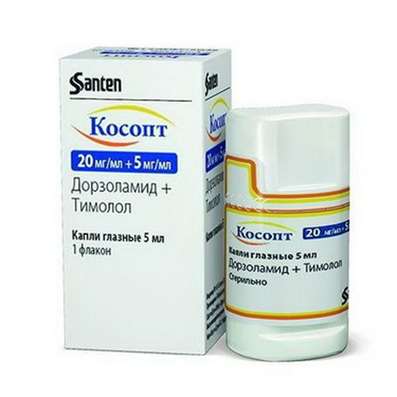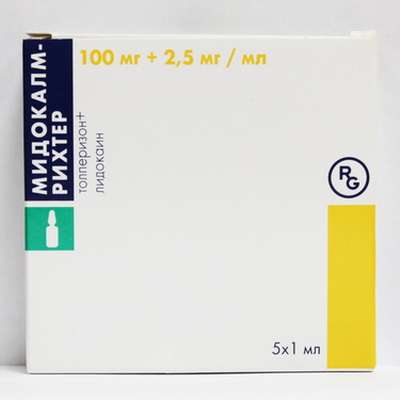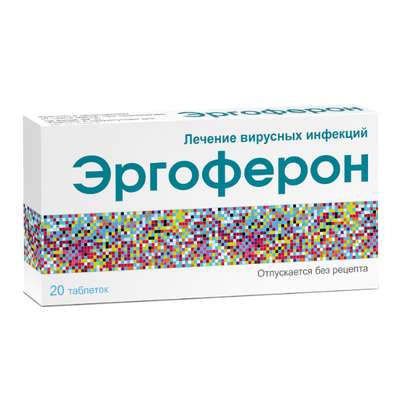Instruction for use: Polisorb MP
I want this, give me price
Active substance: Silicium dioxide colloidal
ATX code A07B Adsorptive intestinal preparations
Pharmacological group
Adsorbents
Nosological classification (ICD-10)
A05.9 Bacterial food poisoning, unspecified
Bacterial intoxication, Diarrhea with food intoxication, Acute diarrhea in food poisoning, Nutritional intoxication, Food poisoning, Foodborne diseases, Toxic food insecticide, Toxic diarrhea
B19 Viral hepatitis, unspecified
Anicteric hepatitis, viral hepatitis, Viral hepatitis in children, Infection of the liver, Acute liver infection
K59.1 Functional diarrhea
Diarrheal syndrome, Diarrhea, Diarrhea with prolonged enteral feeding through the probem, Prolonged diarrheam Nonspecific diarrhea, Acute diarrhea, Diarrhea, Syndrome of diarrhea, Functional diarrhea, Chronic diarrhea, Diarrhea with an electrolyte balance disorder, Chronic diarrhea, Diarrhea of non-infectious genesis, Diarrhea after a gastroectomy, Diarrhea in children, Persistent diarrhea, Diarrhea (diarrhea), Enterocolitis of non-infectious origin
K63.8.0 * Dysbiosis
Violation of the intestinal flora, Correction of intestinal microflora, Normalization of intestinal microflora, Bacterial dysbiosis, Viral dysbiosis, Restoration of intestinal flora, Deficiency of lactic-acid and probiotic microorganisms, Diarrhea on the background of antibiotic therapy, Dysbacteriosis, Dysbacteriosis of the intestine, Intestinal dysbiosis, Disruption of normal intestinal microflora, Disbalance of intestinal microflora, Violations of the physiological flora of the large intestine, Disorders of the physiological flora of the small intestine, Helicobacteriosis
N18 Chronic Renal Failure
Congestive kidney failure, Renal failure chronic, Chronic Renal Failure, CRF, Chronic kidney failure in children
R17 Unspecified jaundice
Jaundice, Jaundice caused by medications, Jaundice with hemolytic anemia, Jaundice chronic family, Mechanical jaundice, Obturation jaundice
T50.9 Other and unspecified drugs, medicines and biological substances
Poisoning by cauterizing fluidsá Correction of side effects of drugs, Drug intoxication, Medication intoxication, Acute drug poisoning, Acute drug poisoning, Acute poisoning with potent and toxic substances, Poisoning with medicines, Oxalate poisoning, Poisoning by potent and poisonous substances, Poisoning with iodine preparations
T50.9.0 * Alkaloid poisoning
Intoxication with alkaloids, Ergotism, The fire of Saint Anthony
T51 Toxic effect of alcohol
Intoxication alcoholic, Alcohol intoxication, Intoxication with alcohol, Acute alcohol intoxication, Chronic alcohol intoxication
T56.9 Toxic effect of unspecified metal
Poisoning rare earth metals, Poisoning with salts of heavy metals, Poisoning and heavy rare earths, Heavy metal poisoning
T65.9 Toxic effect of unspecified substance
idiosyncrasy toxic, Intoxication nitro compounds, Intoxication toxins, Professional intoxication, Poisoning nitrites, Poisoning toxins
T78.4 Allergy, unspecified
Allergic reactions to insulin, Allergic reactions to insect stings, Allergic reactions similar to systemic lupus erythematosus, Allergic diseases, Allergic diseases of mucous membranes, Allergic diseases and conditions resulting from increased release of histamine, Allergic diseases of mucous membranes, Allergic symptoms, Allergic symptoms in the mucous membranes, Allergic reactions, Allergic reactions caused by insect bites, Allergic reactions, Allergic conditions, Allergic laryngeal edema, allergopathy, allergic conditions, Allergy, House dust allergy, Anaphylaxis, Cutaneous reactions to medications, Skin reaction to insect stings, Cosmetic allergy, Drug allergy, Acute allergic reaction, Laryngeal edema allergic genesis and background radiation, Food and drug allergy
Y57 Adverse reactions in the therapeutic use of other and unspecified drugs and medications
Y97 factors associated with environmental pollution
Atmospheric pollution, Accommodation in ecologically unfavorable regions and work in harmful conditions of production, Inhaled allergens, Exposure to environmental hazards, The impact of environmental factors, The impact of adverse environmental conditions, Exposure to chemical agents,Environmental risks, Areas of concern
Z57 Occupational exposure to risk factors
The impact of chemical factors, The adverse effect of occupational risk factors, The adverse effect of occupational risk factors, Work in extreme professional loads, Work in harmful conditions, Work in hazardous industries, Working with occupational risk factors, Occupational lung diseases
Composition
Powder for the preparation of a suspension for ingestion 1 pack.
active substance:
Silica colloidal dioxide
Powder for the preparation of a suspension for ingestion of 1 can
active substance:
Silica colloidal dioxide
Description of dosage form
Light white or white with a bluish tint powder odorless. When shaken with water, it forms a suspension.
pharmachologic effect
Pharmacological action - adsorbent, detoxifying, adaptogenic.
Pharmacodynamics
Polisorb MP (medical oral) is an inorganic, nonselective, multifunctional enterosorbent based on highly disperse silica with particle sizes up to 0.09 mm, with the chemical formula SiO2. The adsorption capacity of the drug for internal use is about 300 mg / g.
Polisorb MP has a pronounced sorption and detoxification properties. In the lumen of the gastrointestinal tract, the drug binds and removes from the body endogenous and exogenous toxic substances of various nature, pathogenic bacteria and bacterial toxins, antigens, food allergens, drugs and poisons, heavy metal salts, radionuclides, alcohol.
Polisorb MP also absorbs some metabolic products of the body, incl. excess of bilirubin, urea, cholesterol and lipid complexes, as well as metabolites responsible for the development of endogenous toxicosis.
Pharmacokinetics
Polisorb MP is not split and not absorbed into the digestive tract and is excreted unchanged.
Indications
acute and chronic intoxications of various origin in adults and children;
acute intestinal infections of any genesis, including food-borne diseases, as well as diarrheal syndrome of non-infectious origin, dysbacteriosis (as part of complex therapy);
purulent-septic diseases, accompanied by severe intoxication;
acute poisoning with potent and poisonous substances, incl. medicinal preparations and alcohol, alkaloids, salts of heavy metals;
food and drug allergy;
Hyperbilirubinemia (viral hepatitis and other jaundice) and hyperazotemia (chronic renal failure);
residents of ecologically unfavorable regions and workers of harmful industries for the purpose of prevention and treatment;
as a radioprotective agent, ensuring successful adaptation of the human body under the conditions of exposure to various doses of radiation;
in sports practice in short-term preparatory cycles in order to improve adaptive capabilities and physical performance after heavy physical exertion.
Contraindications
peptic ulcer of the stomach and duodenum in the phase of exacerbation;
bleeding from the digestive tract;
intestinal atony;
individual intolerance of the drug.
Side effects
Rarely - allergic reactions, indigestion, constipation.
With prolonged, more than 14 days, the reception of the drug Polisorb MP may impair absorption of vitamins, calcium, and therefore recommended the preventive reception of multivitamin preparations, calcium.
Interaction
It is possible to reduce the therapeutic effect of concomitantly ingested medicines.
Dosing and Administration
Inside, only in the form of an aqueous suspension!
To prepare the suspension, the required amount of the preparation is thoroughly mixed into 1 / 4-1 / 2 cups of water. It is recommended to prepare a fresh suspension before each intake of the drug and drink it 1 hour before eating or taking other drugs.
The average daily intake for adults is 0.1-0.2 g / kg (6-12 g).
Multiplicity of admission - 3-4 times during the day.
The maximum daily intake in adults is 0.33 g / kg.
The dose for children is calculated according to the body weight.
1 tsp with a "slide" - 1 g of the drug; 1 st.lozhka with a "slide" - 2.5-3 g of the drug.
With food allergy, the drug should be taken immediately before or during meals, the daily dose of the drug is divided during the day into 3 divided doses.
The duration of treatment depends on the diagnosis and severity of the disease. The course of treatment for acute intoxication - 3-5 days; with allergic diseases and chronic intoxications - up to 10-14 days. Repeat the course of treatment is possible in 2-3 weeks, on the recommendation of a doctor.
Peculiarities of Polisorb MP application in various diseases
Food poisoning and acute poisoning
Treatment should be started as early as possible on the first day of the illness.
Rinse the stomach with 0.5-1% suspension of Polisorb MP. In case of severe poisoning during the first day, gastric lavage is carried out through the probe every 4-6 hours, along with the preparation is given inside. A single dose in adults can be 0.1-0.15 g / kg 2-3 times a day.
Acute intestinal infections
It is recommended to start treatment with Polisorb MP in the first hours or days of the disease in conjunction with other therapies.
In the first day of treatment, the daily dose is given for 5 hours with intervals between doses of 1 hour.
On the second day of treatment, the daily dose is given for 4 divided doses, with intervals of 1 hour between meals and other medications. Duration of treatment is 3-5 days.
Treatment of viral hepatitis
In complex therapy of viral hepatitis, Polisorb MP is used as a detoxifying agent in usual doses for the first 7-10 days of the disease.
Chronic Renal Failure
The course of treatment with Polisorb MP is 25-30 days in a daily dose of 0.15-0.2 g / kg. Courses can be repeated at intervals of 2-3 weeks.
Alcoholism, drug addiction
Polisorb MP is used to treat alcohol withdrawal syndromes, at a dose of 0.2 g / kg / day, for 5-10 days.
Dermatology
The course of treatment for psoriasis and eczema is 14-21 days, and for other dermatoses - 10-14 days.
Allergic diseases
In cases of acute drug and food allergies, the stomach and intestine are first washed with a 0.5-1% suspension of the Polisorb MP preparation. Then the drug is taken in usual doses before the onset of clinical effect. In chronic food allergies, courses are recommended for 7-10-15 days, the drug is taken immediately before meals.
Similar courses are indicated for acute recurrent urticaria and Quinck's edema, eosinophilia on the eve and against the background of exacerbation of pollinosis and other atopias.
The daily dose is 0.1-0.3 g / kg, until the clinical effect.
The inclusion of Polisorb MP in complex therapy in acute and recurrent urticaria and Quinck edema, bronchial asthma, pollinosis and, especially, atopic dermatitis.
The duration of the course depends on the persistence of clinical manifestations and is, on average, 5-10 days.
Treatment and prevention gestozov
The daily dose of Polisorb MP for prophylactic purposes is 0.1 g / kg, and in therapeutic - 0.15-0.2 g / kg.
The duration of treatment in both cases is 10-14 days. Courses can be repeated after 10-14 days.
Treatment and prevention of diseases associated with the development of atherosclerosis.
It is recommended to use Polisorb MP in patients with diseases caused by the development of atherosclerosis, at a dose of 0.1-0.15 g / kg / day for 1-1.5 months.
For the prevention of atherosclerosis, especially in persons suffering from hypercholesterol and lipidemia, Polisorb MP is used in the same doses and at the same time. If necessary, the courses can be repeated after 1-1.5 months.
Form of issue
Powder for the preparation of a suspension for oral administration. By 1/2/3/6/10/12 g in single-use packages of label paper with a thermolayer. For 1/2/3/4/5/10/30/50/100 single-use packages in a cardboard box. It is allowed to put one-time packages directly in a group package.
50 grams per pack double PE or 5/10 kg in packages double PE (for hospitals). Packages of 50 g are placed in a cardboard box.
Also on 12/15/20/25/30/35/40/45/50 g in polystyrene, PE or PET cans, sealed with lids made of similar materials. The can is placed in a cardboard box, or the cans are packed in shrink film for 3-15 pcs.
Conditions of leave from pharmacies
Without recipe.
Storage conditions
At a temperature of no higher than 25 ° C. After opening the package, store in a tightly closed container. Shelf life of the suspension is no more than 48 hours.
Keep out of the reach of children.
Shelf life
5 years.
Do not use after the expiry date printed on the package.

 Cart
Cart





